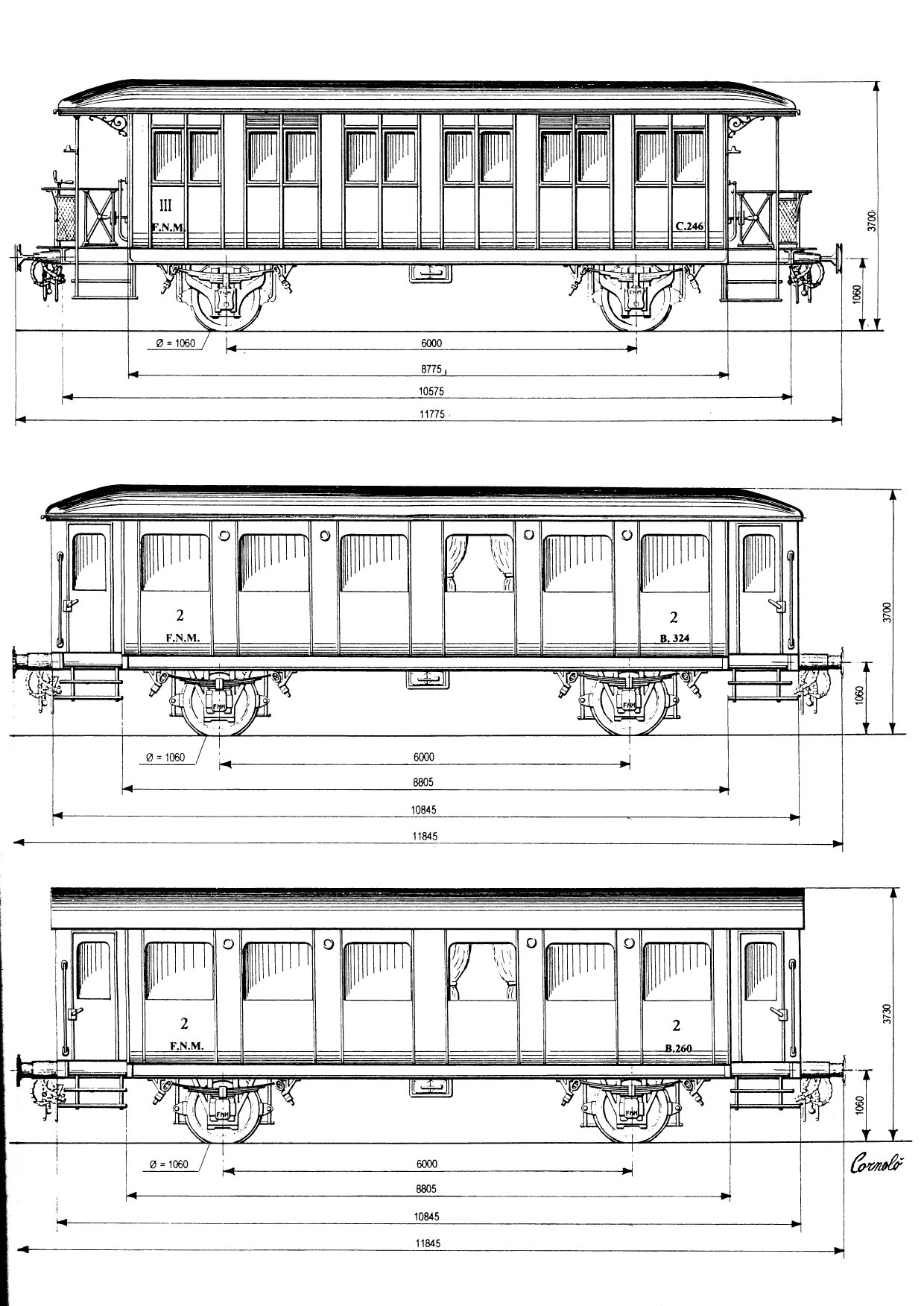The third class coaches introduced from the very beginning on the FNM line formed the largest class of coaches. Before the first bogie coaches were introduced in the late 1920s and early 1930s, their structure was still the two-axle style with a wooden body mounted on a metal chassis. Access was via open platforms at each end, protected by the standard railings and gates as well as featuring gangways and protection for moving between coaches. Their construction continued uninterrupted for almost 60 years. The final batch built between 1924 and 1927, as described here, was the most comfortable, as it had a curved rather than flat roof, double windows and a capacity of around 60 people per coach. Some were also fitted with steam heating. The coaches in this last class in particular were modernised following World War II, which allowed roughly a hundred examples to survive; the last of these ceased circulation in the early 1980s.
C coaches

- Progettazione: 1924
- Costruzione: 1924-1927
- Esercizio: 1924-1983
- Massa in servizio: t.11,8
- Ruote Ø: 1.060 mm
- Costruttore: Reggiane-OEFT
- Lunghezza fuori tutto: 11,775 mm
- Passo rigido: 6.000 mm
- Velocita massima: 70 Km/h
- Illuminazione: elettrica
- Altezza imperiale: 3.700 mm
- Posti a sedere: 60 posti
- Freno: Continuo
- Portata: t. 3
- Livrea: verde
- Design date: 1924
- Build date: 1924-1927
- Service date: 1924-1983
- Service mass: 11.8 tons
- Wheel Ø: 1,060 mm
- Builder: Reggiane-OEFT
- Overall length: 11.775 mm
- Rigid wheelbase: 6,000 mm
- Maximum speed: 70 Km/h
- Lighting: electric
- Roof height: 3,700 mm
- Passenger capacity: 60 seats
- Braking system: Continous
- Load capacity: 3 tons
- Livery: green
As with the previously described third-class coaches, the body was divided into two sections: smoking and non-smoking. Access was via platforms through sliding doors. Inside there were wooden slat benches arranged in rows of 2 and 3 seats, separated by a central aisle. Above the benches were luggage racks, also in wooden slats. During post-war reconstruction, these coaches and some from other classes were modernised and fitted with new windows, much larger than the originals, with an aluminium frame. New aluminium luggage racks were positioned running lengthwise above the windows. The electric lighting was improved and they were gradually fitted with autonomous heating with the fitting of Webasto diesel-fired heaters. Most importantly, the open platforms were replaced by enclosed platforms equipped with hinged doors. Not only was this considerably more comfortable in winter, but it also allowed passengers to occupy the platforms even in bad weather.

